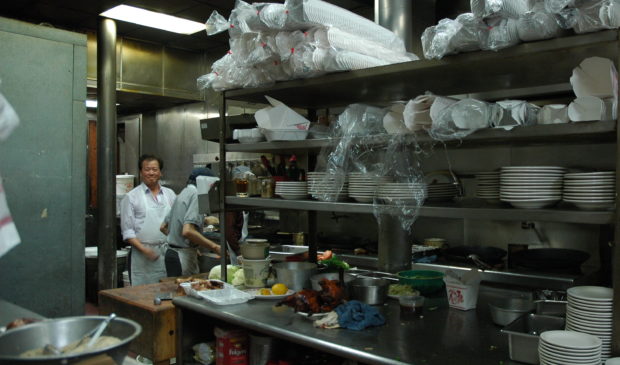City contemplates restaurant inspection changes
Tuesday, May 22, 2018 by
Elizabeth Pagano Austin may change how it inspects restaurants in the city, and City Council members are taking a look at how the change could impact the bottom line for some local businesses.
Don Hastings, who is the assistant director of the Environmental Health Services Division of Austin Public Health, explained the changes to Council’s Health and Human Services Committee.
The proposal, said Hastings, would change the methods used to inspect the city’s 5,800 food establishments in a way that he claimed would better protect consumer health and food safety.
“We also feel it is more equitable,” he said. “Because it allocates inspection resources where they are most needed, which is the riskier food establishments – the more complex, full-service food establishments.”
Currently, the city inspects all food establishments twice a year. Hastings told the committee that technique was less than ideal because some establishments were inherently riskier than others.
“They might serve oysters,” he said, “whereas others serve only prepackaged goods, like a convenience store.”
Under the new plan, those higher-risk establishments, essentially full-service restaurants, would be subject to inspections three times a year. However, consistently high-scoring establishments would be able to return to the twice-yearly inspection schedule. Medium-risk establishments, like fast-food restaurants, would typically be inspected twice yearly, though they could be inspected three times a year if they scored low on those inspections, or just once a year if their inspections were consistently high scoring. Finally, lower-risk businesses like convenience stores would be inspected annually, though they could be inspected twice a year if those inspections yielded lower scores.
The city is also looking to revamp the permitting fees charged to businesses for inspections.
Currently, food establishment permit fees are based on the number of employees of a business. There are five categories, and fees range from $475 to $734. The city is now proposing to expand that to nine categories, based on both the level of food preparation risk and the number of employees. In this scenario, large, higher-risk establishments would pay the most at $937, and small, lower-risk establishments would pay the least, at $225.
Download (PDF, 56KB)
Hastings said that the current approach would bring in an estimated $111,112 more each year, and the city would be performing about 635 additional inspections each year. The excess revenue, said Hastings, would go toward purchasing official inspection vehicles to replace the unmarked personal vehicles currently used for inspections.
The Greater Austin Restaurant Association has thrown its support behind the switch, after it was changed to include incentives for high-scoring restaurants.
Skeeter Miller, a former president of GARA, told the committee that his organization liked the program, which would reward good actors with fewer inspections. On the other hand, he noted, “some restaurants are not necessarily great stewards of making sure that they have a nice environment in their restaurant – a healthy environment – I think it kind of pushes them to work harder and have better goals.”
Council Member Ann Kitchen said she was concerned about an increase in fees for medium-sized restaurants, a category that used to be broken down into three sizes but would be condensed into one – those with 10-100 employees – under the new system. She said she would be more inclined to use the additional revenue to reduce those fees, and fund the vehicles with another source of money.
Alexander Hoover, who is also a member of GARA, agreed with Kitchen, and said he would speak with some of the smaller restaurants in the organization to make sure they wouldn’t face prohibitive increased fees.
If Council supports the proposal, it will be part of the budget process as a change to the fee schedule. If approved, said Hastings, the city would look to implement the new procedures and fees on Oct. 1.
Photo by Wonderlane made available through a Creative Commons license. Fee schedule courtesy of the city of Austin.
The Austin Monitor’s work is made possible by donations from the community. Though our reporting covers donors from time to time, we are careful to keep business and editorial efforts separate while maintaining transparency. A complete list of donors is available here, and our code of ethics is explained here.
You're a community leader
And we’re honored you look to us for serious, in-depth news. You know a strong community needs local and dedicated watchdog reporting. We’re here for you and that won’t change. Now will you take the powerful next step and support our nonprofit news organization?







